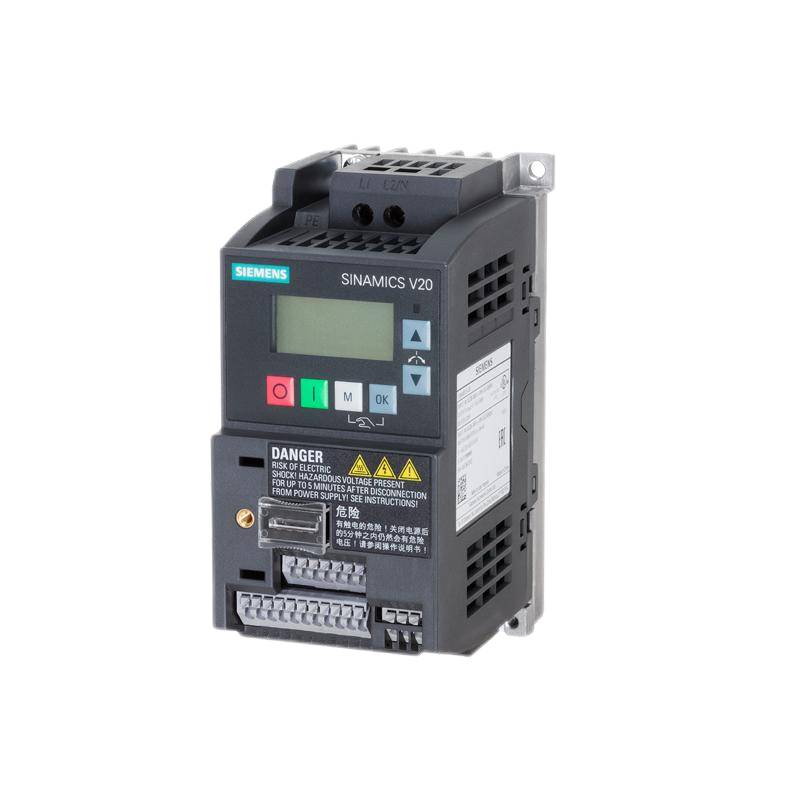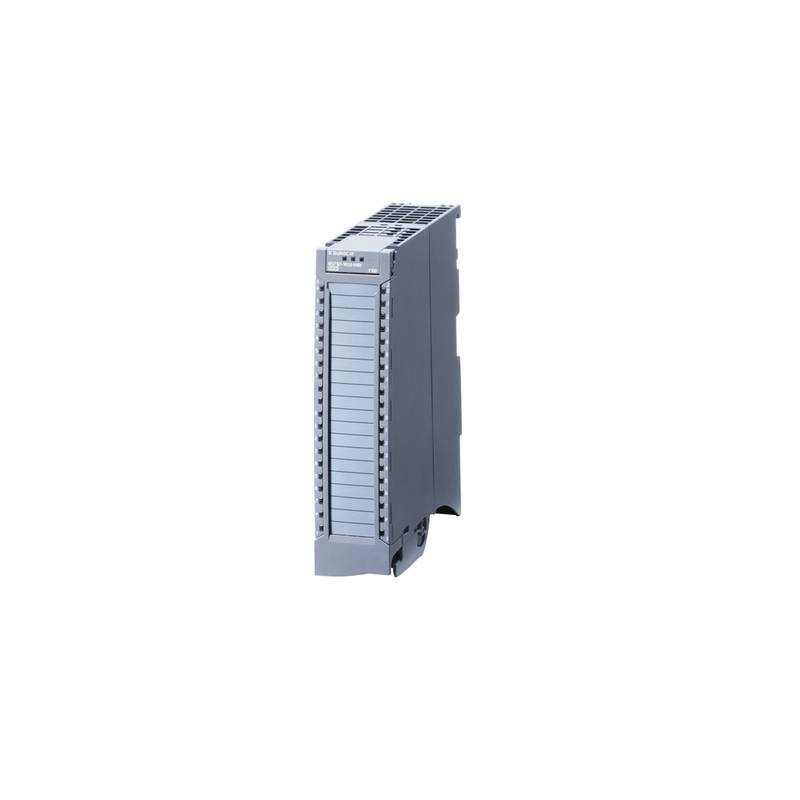
The Siemens 5SN6116-7CN MCB is a single-pole, 16-amp Miniature Circuit Breaker engineered for reliable protection in small equipment and industrial control applications. It offers robust circuit interruption capabilities, a compact design, and adherence to stringent international safety standards, making it a preferred choice for safeguarding sensitive electrical systems. Key technical parameters include a rated current of 16A, a single-pole configuration, and a breaking capacity suitable for common industrial loads, ensuring dependable performance and operational continuity.
Product Specifications
| Specification | Value |
| :-------------------- | :--------------------------- |
| Product Type | Miniature Circuit Breaker |
| Manufacturer | Siemens |
| Model Number | 5SN6116-7CN |
| Number of Poles | 1 |
| Rated Current (I_n) | 16 A |
| Rated Voltage (U_n) | 230/400 V AC (Varies by standard) |
| Tripping Curve | C |
| Frequency | 50/60 Hz |
| Breaking Capacity | Typically 6 kA |
| Terminal Type | Screw Terminal |
| Mounting Type | DIN Rail (35mm) |
| IP Protection Rating | IP20 |
| Compliance Standards | IEC/EN 60898-1, IEC/EN 60947-2 |
Core Features & Market Positioning
The Siemens 5SN6116-7CN MCB distinguishes itself through its advanced tripping mechanism, providing precise overcurrent and short-circuit protection crucial for preventing damage to connected equipment. Its compact 1P design optimizes space within control cabinets, a significant advantage in densely populated industrial environments. Siemens' reputation for quality and reliability in electrical components positions this MCB as a dependable solution for applications where operational integrity is paramount. The C-curve tripping characteristic is particularly well-suited for inductive loads commonly found in industrial machinery and small equipment, offering a balance between sensitivity to faults and resistance to nuisance tripping during motor start-ups.
Key Application Scenarios
This 16A, single-pole MCB is ideally suited for protecting individual circuits within smaller industrial machinery, control panels, and distribution boards. Common applications include safeguarding motors, pumps, lighting circuits, and control logic systems where a compact and reliable overcurrent protection device is required. Its versatility allows for integration into building automation systems, manufacturing equipment, and various general-purpose electrical installations demanding robust circuit interruption. The 5SN6116-7CN is a go-to component for engineers specifying protection for low-power circuits within larger industrial systems.
Practical System Integration Guidance
Installation of the Siemens 5SN6116-7CN MCB follows standard electrical practices for DIN rail-mounted devices. Ensure the supply voltage and current ratings are within the MCB's specifications before connection. Live conductors should be connected to the upper terminals and the load to the lower terminals, adhering to local electrical codes for proper wiring and grounding. The MCB is designed for secure attachment to a standard 35mm DIN rail, ensuring stable mounting within control enclosures. Proper torque must be applied to the screw terminals to ensure secure electrical contact and prevent overheating.
Operation and Risk Mitigation
The primary function of the Siemens 5SN6116-7CN MCB is to automatically interrupt electrical current when an overload or short circuit condition occurs, thereby protecting both the connected equipment and preventing potential fire hazards. To mitigate risks, always ensure the MCB is rated for the specific circuit's maximum expected load and fault current. Regular inspection for signs of wear or damage, though rare with Siemens products, is recommended. In the event of a trip, identify and rectify the cause of the fault (e.g., overloaded circuit, shorted component) before resetting the MCB. Avoid resetting the breaker repeatedly without addressing the underlying issue.
Scalability & Long-Term Value
While the 5SN6116-7CN is a single-pole device, its integration into larger Siemens control and automation platforms, such as the SIVACON or ALPHA distribution systems, allows for scalable solutions. Its compatibility with standard DIN rail mounting ensures seamless integration with other modular electrical components. For enhanced digital integration, consider its use within systems that incorporate smart metering or remote monitoring capabilities, leveraging the robust protection it offers as a foundational element for a more connected industrial environment. The inherent quality of Siemens components ensures long-term operational reliability and reduced maintenance.
Frequently Asked Questions (FAQs)
Q1: What is the breaking capacity of the Siemens 5SN6116-7CN MCB?
The 5SN6116-7CN MCB typically features a breaking capacity of 6 kA. This rating is essential for safely interrupting fault currents. It ensures the device can safely contain and extinguish an electrical arc generated during a short circuit.
This capacity is suitable for most residential and small industrial applications. It protects downstream equipment from severe damage during high-current fault events. Always verify the specific application's fault current levels against this rating.
The 6 kA breaking capacity aligns with IEC/EN 60898-1 and IEC/EN 60947-2 standards. These standards ensure a high level of safety and reliability. It is a common and robust rating for general-purpose MCBs.
Q2: What does the "C" in the tripping curve mean for this MCB?
The "C" designation refers to the MCB's tripping characteristic. This means it is designed for moderate inrush currents. It trips between 5 to 10 times the rated current.
This makes it suitable for inductive loads like motors and transformers. These devices draw higher current when starting up. The C-curve prevents nuisance tripping during these transient events.
It offers a good balance for circuits with occasional high current demands. It is less sensitive to temporary surges than a B-curve MCB. It provides robust protection against overloads and short circuits.
Q3: Can the Siemens 5SN6116-7CN MCB be used for DC applications?
This MCB is primarily designed and rated for AC circuits. Its specifications are based on AC system behavior. Using it in DC systems can lead to unpredictable performance.
For DC applications, specific DC-rated circuit breakers are required. These have different arc-quenching mechanisms. Using an AC-rated MCB on DC can result in failure to trip or hazardous conditions.
Always consult the product datasheet and relevant standards for specific application requirements. Ensure the MCB is certified for the intended voltage and current type. Safety is paramount in electrical installations.
Q4: How do I reset a tripped Siemens 5SN6116-7CN MCB?
First, identify and rectify the cause of the trip. This is crucial to prevent repeated tripping. Look for overloaded circuits or faulty equipment.
Once the fault is resolved, firmly push the breaker's handle to the "OFF" position. Then, push it to the "ON" position. This action resets the internal mechanism.
If the MCB trips again immediately after resetting, there is likely still an issue. Do not force the breaker. Seek professional assistance from a qualified electrician to diagnose the problem.
Q5: What is the maximum voltage rating for this MCB?
The Siemens 5SN6116-7CN MCB is typically rated for 230/400V AC. This is a standard rating for single and three-phase systems in many regions. Always confirm the exact voltage rating on the device itself or its documentation.
This rating ensures safe operation within typical distribution voltages. Exceeding the rated voltage can lead to insulation breakdown and failure. It is important to match the MCB's voltage rating to the circuit's operating voltage.
For specific installations or higher voltage requirements, different MCB models with appropriate ratings must be selected. Adhering to voltage limitations is critical for electrical safety and equipment longevity.
Q6: Is the Siemens 5SN6116-7CN suitable for DIN rail mounting?
Yes, the 5SN6116-7CN MCB is designed for easy mounting on a standard 35mm DIN rail. This is a common standard in electrical enclosures and control panels. The rail provides a secure and organized mounting platform.
The compact size and DIN rail compatibility make it ideal for space-constrained applications. Installation is typically straightforward, involving clipping the MCB onto the rail. Secure connections are made via screw terminals.
This mounting method simplifies panel building and maintenance. It ensures consistent spacing and alignment of components within the enclosure. It is a widely adopted standard in industrial and building electrical systems.
Q7: What are the main advantages of using a C-curve MCB?
C-curve MCBs offer enhanced protection for inductive loads. They can handle higher inrush currents common in motors and transformers. This prevents unnecessary tripping during startup.
They provide a good compromise between sensitivity and surge tolerance. This reduces nuisance tripping in circuits with transient overcurrents. It ensures stable operation of connected equipment.
Compared to B-curve MCBs, they are less prone to tripping from temporary high currents. However, they are still sensitive enough to protect against sustained overloads and short circuits. This makes them versatile for industrial use.
Q8: Where can I find the official datasheet for the Siemens 5SN6116-7CN?
Official datasheets are typically available on the Siemens Industry Automation and Drive Technologies website. You can often find them by searching for the product model number on their support or download portal. Look for sections related to Low Voltage Products or Circuit Protection.
Alternatively, authorized Siemens distributors often provide access to technical documentation. They may have downloadable PDFs or links to the manufacturer's resources. Contacting Siemens technical support directly is also an option.
Always ensure you are downloading the most current version of the datasheet. This will contain all the precise technical specifications, compliance information, and dimensional data for the 5SN6116-7CN MCB.
Q9: What safety precautions should I take when installing this MCB?
Always ensure the power supply to the circuit is completely isolated before installation. Lockout/tagout procedures should be followed to prevent accidental re-energization. Wear appropriate personal protective equipment (PPE), such as safety glasses and insulated gloves.
Follow all local electrical codes and regulations during installation. Ensure proper wire sizing, termination, and grounding. Use the correct tools and torque settings for screw terminals to ensure a secure connection.
Never attempt to install or service electrical equipment unless you are a qualified and trained professional. If you are unsure about any aspect of the installation process, consult with a licensed electrician to ensure safety and compliance.
Q10: How does this MCB protect against short circuits?
A short circuit creates a very low-resistance path, causing a massive surge of current. The Siemens 5SN6116-7CN MCB detects this rapid, high-magnitude current. Its internal magnetic trip mechanism responds almost instantaneously.
This magnetic trip is calibrated to activate at a much higher current level than the thermal trip. It opens the circuit within milliseconds. This extremely fast interruption is crucial to prevent catastrophic damage to wiring and equipment.
The MCB's breaking capacity (e.g., 6kA) ensures it can safely interrupt this fault current without self-destruction. This rapid disconnection isolates the faulty section, preventing fires, equipment damage, and potential injury.

























